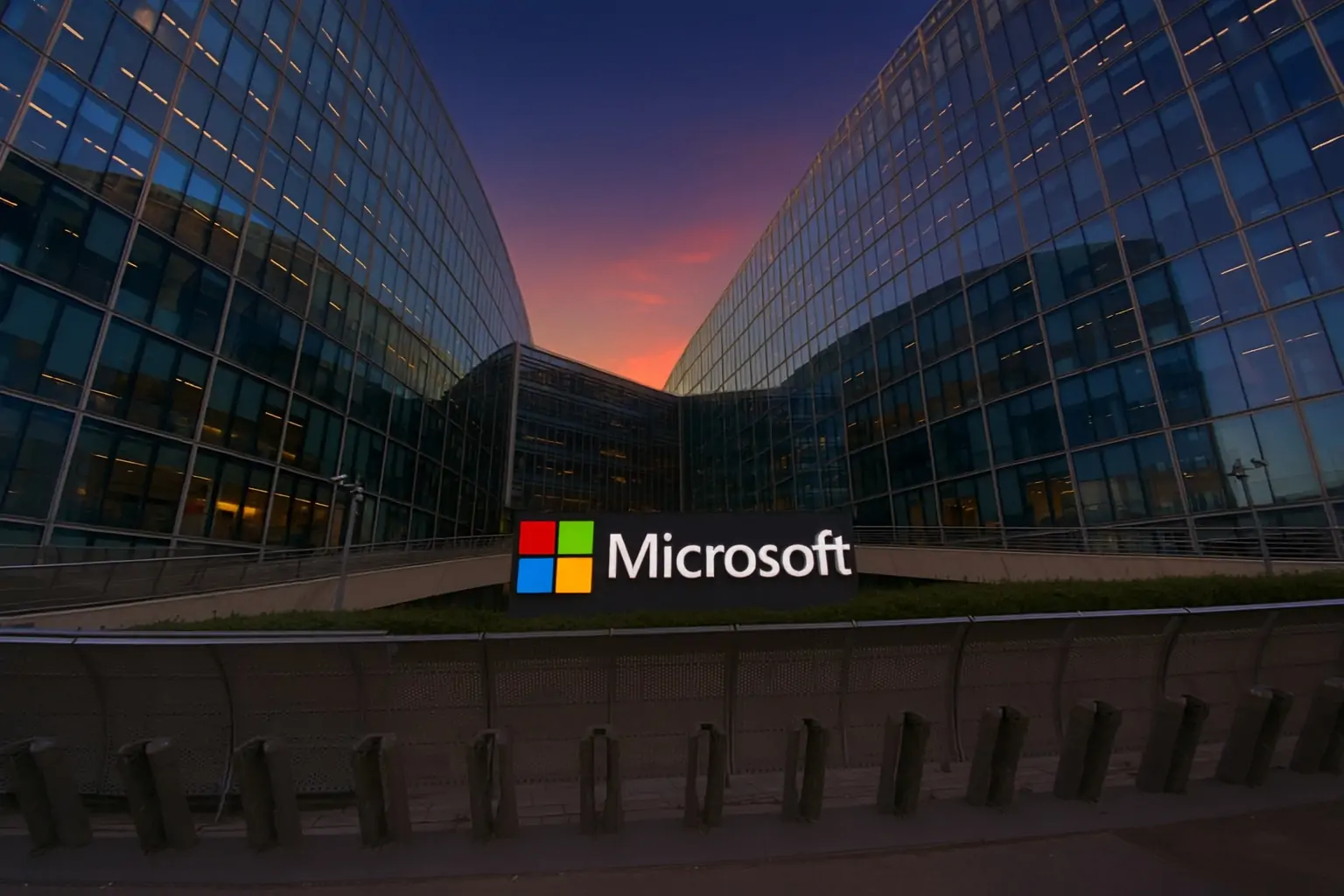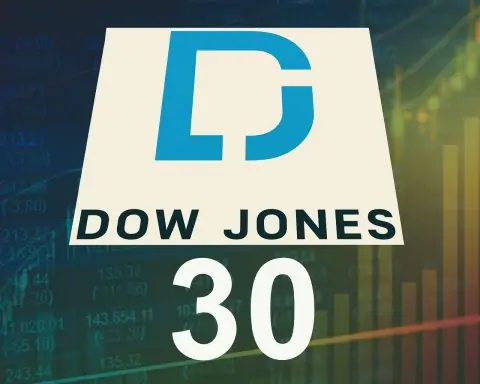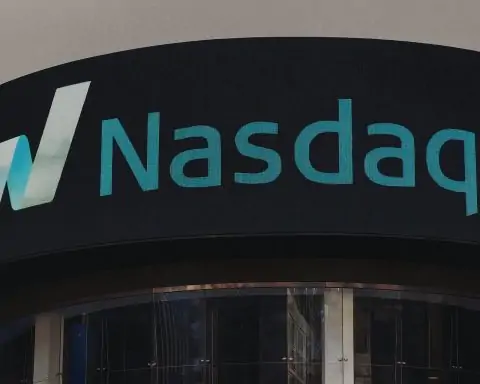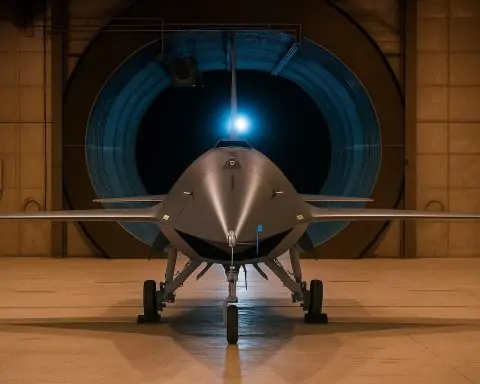As of November 17, 2025, Microsoft is pushing even harder into the AI era on three fronts at once:
- Its Fairwater AI “superfactory” of datacenters is now live and interconnected. [1]
- Wall Street firm Baird has just initiated coverage of Microsoft (MSFT) with an Outperform rating and a $600 price target, explicitly citing the company’s leadership in AI. [2]
- New Azure AI partnerships and customer wins (Dynatrace, ABB, and others) are hitting the wires today, reinforcing the narrative that Microsoft’s cloud is becoming the default platform for enterprise AI. [3]
At the same time, a fresh Microsoft-backed report on AI diffusion warns that the technology is spreading faster than any past tech wave, but unevenly—raising new economic and security fault lines. [4]
Below is a detailed breakdown of what’s happening today and how it connects back to the news in Yahoo Finance, Seeking Alpha and TipRanks about Microsoft’s AI and cloud dominance.
1. Microsoft’s Fairwater AI Superfactory Is Now Live
A central theme behind all three reference articles is Microsoft’s aggressive build‑out of AI infrastructure. That story has reached a new milestone today.
Fairwater: From concept to operational “AI superfactory”
Microsoft has now switched on what it calls the Fairwater family of AI datacenters, linking its Atlanta and Wisconsin sites over a dedicated, high‑speed optical backbone so they function as a single, distributed AI supercomputer. [5]
Key details from Microsoft’s own disclosures and recent coverage:
- The Atlanta Fairwater site is a two‑story AI datacenter designed specifically for training and running large AI models—not general cloud workloads. [6]
- Racks are built around NVIDIA GB200/GB300 GPU systems in ultra‑dense configurations, pushing GPU throughput per rack beyond current cloud norms. [7]
- Fairwater sites are connected via a dedicated AI Wide Area Network (AI WAN) with around 120,000 miles of fiber, allowing data to move between states in milliseconds. [8]
- Advanced closed‑loop liquid cooling minimizes water usage while handling the enormous heat load of hundreds of thousands of GPUs. [9]
A Microsoft feature story describes this as a virtual supercomputer spread across multiple campuses, optimized to run single, massive AI training jobs instead of millions of small cloud tasks. [10]
Yahoo Finance & WSJ: “AI Super Factory” drives data center expansion
The Yahoo Finance piece you referenced — “Microsoft (MSFT) Expands Data Center Build-out with an AI Super Factory” — is based on Wall Street Journal reporting that Microsoft is doubling its data center footprint over the next two years, driven largely by Fairwater and similar AI‑centric builds. [11]
That WSJ report and related coverage highlight that:
- Fairwater Atlanta alone spans roughly a million square feet and sits on an ~85‑acre site. [12]
- Microsoft has spent more than $34 billion in capital expenditure in a single quarter, much of it on AI infrastructure, and signaled that spending will keep rising. [13]
- The AI superfactory is built to power workloads for OpenAI, Microsoft’s AI Superintelligence team, and other frontier-model partners and customers. [14]
In other words: the “AI super factory” that Yahoo and WSJ wrote about is no longer just a blueprint—it’s now operational at full scale, and today’s news cycle is treating that as a pivotal moment in the AI infrastructure arms race.
2. Earnings and AI: Why Analysts See Microsoft as a Cloud & AI Powerhouse
The TipRanks weekend article you cited, “Microsoft’s AI and Cloud Dominance: A Stock to Watch,” ties the infrastructure story directly to the numbers — and those numbers are what’s driving the bullish calls on MSFT. [15]
FY26 Q1: Big cloud, bigger capex
From Microsoft’s latest fiscal Q1 2026 results and the TipRanks recap:
- Revenue grew about 18% year‑over‑year to roughly $77.7 billion, beating expectations. [16]
- Cloud was the star: Azure and Intelligent Cloud booked around $49.1 billion in revenue, up ~26%. [17]
- Azure alone delivered approximately 40% growth, underlining Microsoft’s strength among hyperscale cloud providers. [18]
- Capital expenditure surged about 74% to nearly $35 billion in the quarter, primarily to expand AI and cloud infrastructure—including Fairwater. [19]
At the product layer, TipRanks notes that Copilot, Microsoft’s AI assistant across Microsoft 365 and other surfaces, has more than 150 million monthly active users, highlighting demand for AI‑enhanced productivity tools. [20]
This combination—hyper‑growth in cloud, massive AI capex, and rapid Copilot adoption—is at the heart of the company’s new analyst narrative.
3. Baird’s Outperform Rating and the $600 Price Target
The Seeking Alpha link you provided is echoed across several other outlets (GuruFocus, TipRanks, Investing.com), which make the Baird thesis quite clear: Microsoft is “leading the AI revolution,” and that justifies a premium valuation and a higher price target. [21]
Key points from those reports:
- Rating: Baird initiated coverage of Microsoft with an Outperform rating. [22]
- Target price: The firm set a $600 price target, implying roughly high‑teens upside from recent trading levels. [23]
- AI leadership: Baird emphasizes Microsoft’s strategic partnership with OpenAI, plus strong momentum in Azure and Intelligent Cloud, including about 40% Azure revenue growth in the latest quarter. [24]
- Free cash flow: Despite ballooning capex, Baird models around $74 billion in free cash flow by 2026, arguing that AI investments will remain highly accretive over time. [25]
At the same time, GuruFocus and MarketBeat data show:
- A P/E in the mid‑30s and price‑to‑sales near recent highs, signaling a rich valuation relative to history. [26]
- Institutional ownership above 70%, with recent 13F filings showing some firms increasing their stakes and others trimming, but overall heavy professional interest. [27]
In short, Baird’s call does not ignore the cost and risk of AI infrastructure—it argues those costs are justified by Microsoft’s unique position at the center of the AI stack.
4. TipRanks: Microsoft’s AI & Cloud Dominance in One Snapshot
The TipRanks weekend update effectively stitches together the Yahoo and Baird stories:
- It underscores Microsoft’s “leader in AI and cloud” status, with the OpenAI partnership as a core differentiator. [28]
- It cites the same 18% revenue growth to $77.7B and 40% Azure growth as proof that the AI build‑out is already translating into higher top‑line growth. [29]
- It notes that analysts, on average, still see double‑digit percentage upside over the next year and continue to rate the stock a Strong Buy overall. [30]
TipRanks also highlights other bullish signals:
- The Copilot user base and AI features across Microsoft 365 are becoming a recurring, high‑margin revenue engine. [31]
- New experiences like “Experience Center One” show Microsoft leaning into real‑world AI demos across sectors, from productivity and customer support to industrial automation. [32]
When you combine this with Baird’s rating and the Fairwater announcements, you can see why TipRanks frames Microsoft as a flagship AI stock to watch.
5. Fresh November 17 News: Azure AI Ecosystem Keeps Expanding
To match your request for “all current news from 17.11.2025” related to these themes, here are the major Microsoft‑AI‑and‑cloud headlines hitting today (or updated today).
5.1 Dynatrace + Microsoft: AI‑powered reliability for Azure
Two separate articles (TechAfrica News and SecurityBrief) report that Dynatrace has launched a direct integration with the new Microsoft Azure SRE Agent and rolled out a next‑generation AI‑driven cloud operations solution. [33]
Highlights:
- Dynatrace’s AI engine now taps deeper Azure Site Reliability Engineering (SRE) telemetry to perform advanced root‑cause analysis in complex environments. [34]
- The integration is designed to automate incident detection and remediation, reducing outages and freeing teams to focus on innovation. [35]
- Dynatrace is described as the first observability platform to plug directly into the Azure SRE Agent, which strengthens Azure’s position as a preferred platform for enterprises that need end‑to‑end AI‑powered monitoring. [36]
This matters for investors because it’s a classic Azure network‑effects story: as more high‑end tools like Dynatrace build deeply into Azure, the platform becomes stickier, and more workloads tend to follow.
5.2 ABB Schweiz: Industrial AI on Azure and Azure OpenAI
A new Microsoft customer story and a companion report from ITBusinessToday detail how ABB Schweiz AG, the Swiss arm of industrial giant ABB, is using Microsoft Azure and Azure OpenAI Service to power its Genix Industrial AI Suite and Genix Copilot. [37]
Key takeaways:
- Genix ingests huge volumes of data from OT, IT, and engineering systems and uses generative AI to surface actionable guidance for frontline engineers. [38]
- ABB reports 15–18% energy optimization in energy‑intensive industries (like cement), plus significant efficiency gains in data centers. [39]
- Technicians can scan QR codes on industrial analyzers to trigger Genix Copilot, which uses Azure OpenAI Service to retrieve live diagnostics and propose next‑step actions, improving first‑time‑fix rates and reducing emissions. [40]
This is exactly the type of industry‑specific AI use case Microsoft highlights at events like Ignite: not just generic chatbots, but deep integration of Azure AI into mission‑critical operations.
5.3 “Prompt Economy” and enterprise AI maturity
Payments and commerce site PYMNTS reports today that Microsoft is positioning itself as a leader of the “Prompt Economy” for enterprises, rolling out a maturity model that helps organizations gauge how advanced their prompt‑driven AI practices are. [41]
The article frames Microsoft’s Copilot strategy as:
- Moving beyond simple chat into structured prompt workflows embedded in business processes. [42]
- Helping enterprises treat prompts, context, and retrieval as core business assets, not ad‑hoc experiments. [43]
For investors, this underscores that Microsoft isn’t just selling compute; it’s trying to define the operating model for how enterprises adopt generative AI.
5.4 Microsoft’s AI diffusion report: 1.2 billion users, uneven impact
Help Net Security today highlights a new Microsoft study showing that over 1.2 billion people have used an AI tool within three years of mainstream release, making AI adoption faster than any prior major technology wave. [44]
However, the report also warns that:
- AI adoption is uneven across regions and sectors, deepening a new kind of digital divide.
- Governments and security teams are under increasing strain, as the same tools powering economy‑wide gains can also create new threat vectors. [45]
This is important context: Microsoft’s AI scale (Fairwater, Azure OpenAI, Copilot) doesn’t operate in a vacuum; it also pulls the company into regulatory, ethical, and geopolitical debates over AI deployment.
6. The Market’s View Today: Heavy AI Spending, But Strong Support
Alongside today’s product and partnership news, fresh 13F and MarketBeat filings show institutions continuing to treat Microsoft as a core holding:
- Some firms like Schubert & Co and Quotient Wealth Partners have grown their MSFT stakes, while others, such as Signature Estate & Investment Advisors, have trimmed positions. [46]
- Across these filings, institutional investors collectively own over 70% of Microsoft shares, a sign of sustained large‑scale confidence despite valuation concerns. [47]
Meanwhile, multiple analyst houses beyond Baird are maintaining “Buy” or “Overweight” ratings with price targets frequently north of $600, according to MarketBeat summaries. [48]
These data points align with the story told in TipRanks and GuruFocus: the market is well aware of Microsoft’s heavy AI capex, but many analysts still view the company as one of the most attractive ways to gain broad exposure to the AI and cloud boom.
7. What It All Means for MSFT Going Forward
Putting the pieces together—from the original Yahoo, Seeking Alpha, and TipRanks articles to today’s news flow—Microsoft’s AI and cloud story on November 17, 2025 looks like this:
- Infrastructure moat:
Fairwater and the AI superfactory approach push Microsoft toward a multi‑region AI infrastructure lead, with dense GPU campuses connected by a dedicated AI WAN. That’s difficult and expensive for rivals to match. [49] - Cloud & product flywheel:
Azure’s growth, Copilot’s user base, and deep integrations with partners like Dynatrace and ABB create a reinforcing loop: more AI infrastructure → more AI services → more high‑value workloads on Azure → justification for even more infrastructure. [50] - Financial tension: growth vs. spending:
Record capex and premium valuation mean that execution risk is real. If AI demand slows or margins compress, the same spending that fuels today’s growth could become a drag. That’s why some investors and insiders are cautious, even as analysts like Baird remain bullish. [51] - Regulatory and societal backdrop:
With over a billion people already using AI tools and governments scrambling to respond, Microsoft’s AI leadership also carries policy and reputational risks, along with opportunities to shape standards and best practices. [52]
8. Bottom Line
The news stream around Microsoft on November 17, 2025 reinforces the core message from the links you shared:
- The AI superfactory described by Yahoo Finance and the WSJ is now live.
- The Baird Outperform rating and $600 target build on a thesis that Microsoft is structurally advantaged in AI and cloud.
- TipRanks’ “AI and Cloud Dominance” narrative is being supported by fresh, real‑world deployments and partnerships hitting the wires today.
For readers and investors, the takeaway is clear: Microsoft is no longer just participating in the AI boom—it is architecting the infrastructure, tools, and enterprise playbooks that will likely define how AI is built and used at global scale.
This article is for informational purposes only and does not constitute investment advice.
References
1. www.startuphub.ai, 2. www.gurufocus.com, 3. techafricanews.com, 4. www.helpnetsecurity.com, 5. www.startuphub.ai, 6. news.microsoft.com, 7. blogs.microsoft.com, 8. news.microsoft.com, 9. news.microsoft.com, 10. news.microsoft.com, 11. finance.yahoo.com, 12. www.wsj.com, 13. www.reuters.com, 14. news.microsoft.com, 15. www.tipranks.com, 16. www.tipranks.com, 17. m.economictimes.com, 18. www.tipranks.com, 19. www.reuters.com, 20. www.tipranks.com, 21. www.gurufocus.com, 22. www.gurufocus.com, 23. www.gurufocus.com, 24. www.gurufocus.com, 25. www.gurufocus.com, 26. www.gurufocus.com, 27. www.marketbeat.com, 28. www.tipranks.com, 29. www.tipranks.com, 30. www.tipranks.com, 31. www.tipranks.com, 32. www.tipranks.com, 33. techafricanews.com, 34. techafricanews.com, 35. techafricanews.com, 36. securitybrief.com.au, 37. www.microsoft.com, 38. www.microsoft.com, 39. www.microsoft.com, 40. www.microsoft.com, 41. www.pymnts.com, 42. www.pymnts.com, 43. www.pymnts.com, 44. www.helpnetsecurity.com, 45. www.helpnetsecurity.com, 46. www.marketbeat.com, 47. www.gurufocus.com, 48. www.marketbeat.com, 49. news.microsoft.com, 50. techafricanews.com, 51. www.reuters.com, 52. www.helpnetsecurity.com










